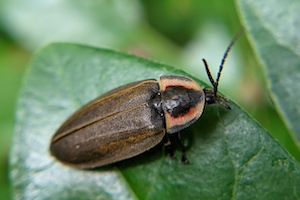Photo Credit: © Claire O'Neill via iNaturalist.org. Creative Commons Attribution-NonCommercial 4.0 International (CC BY-NC 4.0) License; https://creativecommons.org/licenses/by-nc/4.0/.
Photinus corrusca
Common Name: winter firefly
Other Scientific Names: Ellychnia corrusca
Animal Guild: Insect
Class > Order > Family: Insecta > Coleoptera > Lampyridae
